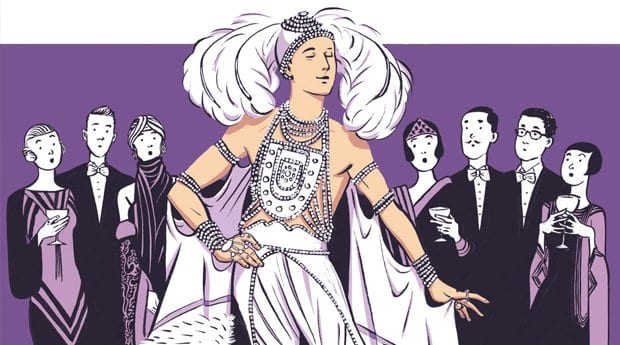The name “Romain de Tirtoff” may not be familiar, but his images certainly are. The work of this 20th-century artist influenced everything from fashion to theatre to architecture. Though he came from a long line of Russian naval leaders on his father’s side, art called to him from a young age, and he designed his first dress when he was five. He left St Petersburg at 19 to go to Paris, where he dedicated his life to the art of beauty and adopted his familiar pseudonym, a phonetic pronunciation of his initials: Erté.
A shy, introverted, intensely private person with an eidetic memory, Erté was one of the early artists working in what became known as the Art Deco style, which he described as “the marriage between pure and applied art,” as geometric and precise as it is vibrant and wild. Over a career of almost 80 years, he became famous for his Harper’s Bazaar covers and designs for theatre, opera, ballet, music halls, cinema and fashion. Much is made of his work, but there is little mention of his sexuality and relationships; while Erté was flamboyantly gay, he’s coy about his affairs in his autobiography, Things I Remember.
He describes one early amorous adventure, the first of many. Two children of Baltic royalty were studying in Russia, and they ended up on an estate neighbouring the de Tirtoff summer house in what is now northeast Estonia. Thirteen-year-old Romain was attracted to one of the children (ungendered in his writing), who was a few years older than he, and they met in secret one night. “The next morning the gardeners complained that the vines covering the walls between the two properties had been damaged.” In this same passage, Erté explains that he “wasted very little emotional energy in trying to fight my own nature, even less in punishing myself with feelings of guilt.” Sex and men were always extremely important to him, though his biggest relationship was always with his work.
In 1913, after a year of lean living and scrabbling for work in Paris, Erté dropped off some sketches and his calling card at the fashion house of Paul Poiret. The fashion designer famous for liberating women from the corset, a larger-than-life Parisian personality, called Erté back the next day to hire him. Through Poiret, the emerging fashion and art visionary got his start in theatre, working on an Orientalist play called The Minaret.
Erté writes about attending a dress rehearsal with a group of friends, an elite social event at the time. One of them, a Poiret model, was allowed to borrow dresses if she was attending important events, and she grabbed a particularly elegant dress, which Erté wore with an ermine coat, long gloves, huge earrings and a turban. The audience was taken by this beauty, and the next day one of Paris’s biggest newspapers reported on a model wearing a turban who “was irresistible, wearing her remarkable ensemble with an air and a sense of style that few models are lucky enough to possess.” This isn’t surprising; throughout his entire life, Erté had an oval, puckish, epicene face and was often mistaken for a woman in his later years.
He was, however, expecting the worst when Poiret, who had looked into the matter, summoned him. Instead of being fired, Poiret offered Erté the opportunity to model dresses designed specifically for him in Poiret’s next collection, though a grateful Erté turned down the offer. For the rest of his life, though, he championed unisex clothing and repeatedly rejected men’s fashion as dull, saying it made men look “like an army of head-waiters.”
Throughout his autobiography, he describes each affair in little more than a sentence, though he spent many “very pleasant” evenings with lovers, even at 80, on a birthday-gift tour of Greece: “As so often happens when I travel, I had a charming adventure during the cruise. There is something erotic in the air of Greece: the land is full of beautiful people.”
Erté was hailed as a “living legend” decades before his death, and he remained active right up until the end. His love for life always came back to this great, eternal work, described in the epilogue of his memoirs: “Not many of us are born beautiful; that is why I have always attached so much importance to clothes. Clothes are a kind of alchemy: they can transform human beings into things of beauty or ugliness.”
History Boys appears in every issue of Xtra.


 Why you can trust Xtra
Why you can trust Xtra


